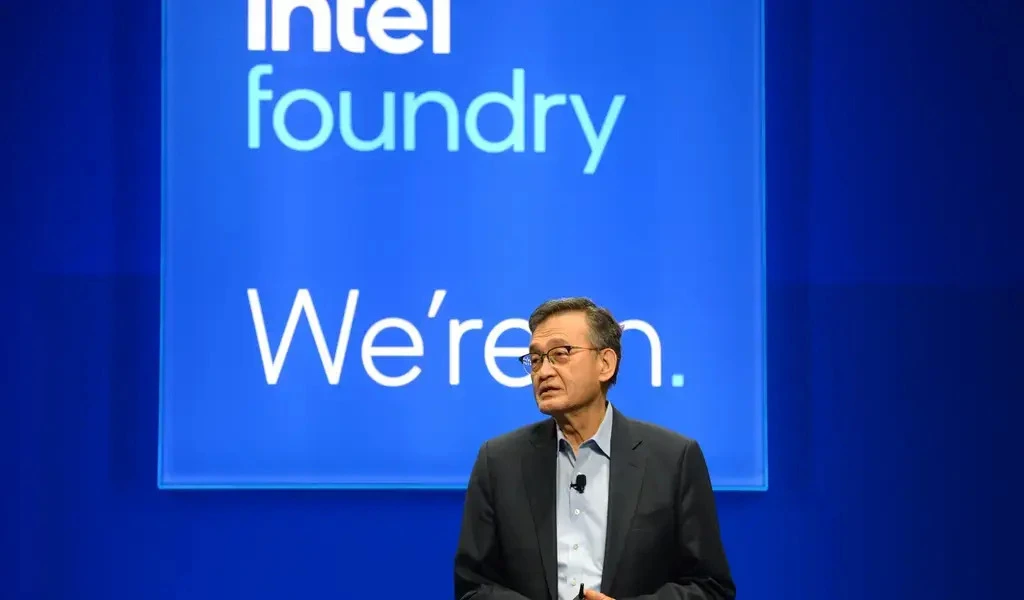Social Media
How to Deal with Hate Comments Gracefully Without Losing Yourself

The first time you read a hate comment with your name in it, your stomach drops. Your face gets hot. Your whole body feels tight, even if you tell yourself, “It’s just the internet.”
Maybe it was under your TikTok, a work post on LinkedIn, or a selfie you were finally proud of. One person decided to throw a cruel line at you, and suddenly, the whole post feels poisoned. That is the power of hate comments.
Hate comments are not just “I don’t like this video.” It is personal, sharp, and often attacks who you are, not what you did. In 2025, online hate speech is rising fast, especially around sexism, racism, and trans issues. Learning how to deal with hate comments gracefully is not just for influencers. It is a basic life skill for anyone who spends time online.
This guide will show you how to protect your peace, respond with class when it helps, and use tools and boundaries so that hate does not control your mood or your future posts.
What Are Hate Comments, And Why Do They Hurt So Much?
Let’s keep it simple.
A hate comment is a message that attacks you as a person. It often includes:
- Insults about your body, race, gender, sexuality, or beliefs
- Name-calling, slurs, or mocking language
- Threats or wishes of harm
That is different from:
- Rude opinions: “This video is cringe.” “You’re not funny.”
- Helpful criticism: “The audio is hard to hear, maybe use a mic next time.”
In the last few years, online hate speech has grown a lot. Early 2025 data shows online hate speech was about 58% higher than the year before, with sexism up more than 200% and transphobia more than 100%. Many people now see hateful content on social media every week, sometimes every day.
No wonder it stings.
Hate comments vs real feedback: How to tell the difference
When you read a harsh comment, it can all feel like hate at first. A quick test helps:
- Look for attacks on identity.
- “You’re such an idiot, no one like you should ever speak”
- “People like you are disgusting”
This is hate. It targets who you are.
- Check the tone.
- “I didn’t like this video, the pacing felt slow”
Annoying maybe, but that is feedback. - “This trash video wasted my life, you should stop posting”
That leans into hate and harassment.
- “I didn’t like this video, the pacing felt slow”
- Ask, is there a clear, useful point?
- “The camera is shaky, it makes it hard to watch”
That has a fix you can use. - “You look weird, stop showing your face”
That has no useful action. It only attacks.
- “The camera is shaky, it makes it hard to watch”
If a comment includes slurs, threats, or pure insults, you do not owe it a response. You can delete it, block the user, or report it. Your energy is better spent elsewhere.
Sometimes, a rough comment hides a tiny bit of feedback. For example:
- “This was so boring, I almost fell asleep, learn to edit”
You do not have to thank them. But you can notice, “Ok, I might try faster cuts next time,” then throw away the rest.
Responding with grace does not mean accepting abuse. It means choosing what you let in.
Why negative comments feel louder than kind ones
You can get 100 nice comments and 1 hateful one. Guess which one your brain replays at night.
That is called negativity bias. Our brains are wired to notice danger and problems more than safety and comfort. Long ago, that helped people survive real threats. Today, it makes a single cruel comment feel bigger than a wall of support.
Think about school or work. You might remember the one bad grade more than all the good ones. Or the one tough performance review line more than all the praise around it.
So if you feel shaken by a single comment, you are not weak or “too sensitive.” You just have a human brain.
A simple habit that helps: for every hate comment you see, read three kind messages on purpose.
You can:
- Screenshot compliments
- Save good DMs in a “Nice things” folder
- Keep a note with positive feedback
This is like weight training for your mind. You are teaching your brain to hold the good as strongly as the bad. A similar idea is shared in guides like 10 Strategies to Deal With Hate Comments on Social Media, which suggest keeping a running list of supportive comments to balance out the negativity.
First Steps When You See a Hate Comment: Pause, Breathe, Decide
The first few minutes after you see a hate comment are critical. Your heart jumps, your thoughts race, and your fingers want to clap back.
Grace starts before you touch the keyboard.
Do not react right away: create a small pause
Even a 30 second break can change everything.
Try this simple routine:
- Put your phone down or lock your screen.
- Take 5 slow breaths. In through the nose, out through the mouth.
- Drink some water or stand up and walk to another room.
- If it still burns, open your notes app or a journal and write exactly what you want to say. Do not post it. Just get it out of your head.
The goal is not to be a robot who never feels hurt. The goal is to move from raw emotion to calm choice. You never lose power by taking a pause. You only gain it.
Ask 3 quick questions before you respond
Once your body feels a little calmer, use this 3 question check:
- Is this comment breaking rules or using hate speech?
- Slurs, threats, or repeated harassment usually mean you should delete, block, or report, not debate.
- Is this a troll trying to get a reaction?
- Trolls live on attention. If the comment feels like bait, it probably is. Ignoring might be your best move.
- Is there any real feedback in here at all?
- If yes, you can take the useful part for yourself. You do not have to thank the person or keep the comment up.
After that, choose: ignore, delete, report, or respond. You do not have to decide in 10 seconds. Take your time.
Protect your mental health in the moment
Hate comments hit our nervous system like a small alarm. Your body deserves care after that.
A few quick options:
- Text a trusted friend and say, “I just got a nasty comment, can I vent?”
- Step away from the app for the rest of the hour, or the day.
- Put on a song you love and move your body to shake off the stress.
- Try a simple grounding exercise: name 5 things you see, 4 things you can touch, 3 things you hear, 2 you can smell, 1 you can taste.
Ask yourself, “What would I say to a friend this happened to?” Then offer that same kindness to yourself.
Your mental health is more important than proving a stranger wrong.
Smart Choices: Ignore, Delete, Report, Or Respond With Grace
Not every hate comment deserves the same reaction. Some are safe to ignore. Some should be removed at once. A few may be worth a short, calm reply.
The way you deal with hate comments gracefully is by choosing the option that protects your peace and values.
When it is best to ignore trolls completely
A troll is someone who posts rude or shocking comments just to get a reaction. Their goal is not truth. Their goal is chaos.
Ignoring trolls can feel like doing nothing, but it is often the most powerful move. When you ignore them:
- They do not get the emotional reaction they want
- Your followers see that you stay calm under pressure
- You keep your time and energy for better things
You can usually ignore:
- Random name calling from accounts with no profile picture
- “lol you’re ugly” or “this is trash” with no real point
- Comments that repeat the same nonsense on every post
Not replying does not mean you are scared. It means you are choosing peace over drama. Many creators on sites like Reddit share that hiding or ignoring obvious hate makes it fade faster than engaging, which you can see in threads such as How do you guys handle hate comments.
How and when to delete or hide hateful comments
Deleting or hiding hateful comments is not censorship of honest opinions. It is basic self-protection, and it keeps your space safer for others.
Remove comments that:
- Use racial, sexist, or homophobic slurs
- Threaten you or another person
- Share private info like your address or workplace
- Are part of a flood of targeted harassment
Remember, large platforms remove millions of hate speech posts every quarter. If Facebook and others clear out that much, you are more than allowed to clean your own page.
Picture your account as your home. You would not let someone walk into your living room and scream insults at your guests. Your comment section works the same way.
Reporting serious abuse and keeping a record
Some comments cross a line that should not be ignored or just deleted.
You should report content to the platform when you see:
- Threats of physical harm or violence
- Repeated attacks from the same account or group
- Hate speech that is clearly targeted at you or a group you belong to
Before you report, take screenshots and save links. If the attacks continue, that record helps if you talk to:
- A trusted adult or parent
- School staff, if you are a student
- HR, if it is related to your job
- Law enforcement, in severe cases
This does not mean you have to panic. It means you do not have to handle serious abuse alone.
How to reply with kindness and class when you choose to respond
Sometimes, you decide to respond. Maybe the comment has real feedback hidden inside. Maybe you want to show your community how you handle conflict.
A graceful reply is:
- Short
- Calm
- Focused on the issue, not the person
A few simple templates:
- “I hear your point about the audio. I’ll try to improve it next time.”
- “I disagree, but thanks for sharing your view.”
- “This space does not allow personal attacks. I’m ending this here.”
Use “I” statements:
- “I do not accept that kind of language here.”
- “I prefer to keep this page respectful.”
Remember, you are not trying to win the hater over. You are staying true to your values and speaking to everyone silently watching.
If you want more ideas on graceful responses and mindset, coaching resources like How to Deal With Haters Gracefully | BYE, HATE … dig into the mental side of handling criticism and hate.
Setting Boundaries Online: Rules, Filters, And Tools That Help
Reacting well to hate is important. Preventing some of it from reaching you is even better.
Strong boundaries and tools help you deal with hate comments gracefully before they ever show up in your notifications.
Create simple community rules for your page
Clear rules make it easier to manage comments without guilt.
You can write a short list, such as:
- No hate speech or slurs
- No threats or wishes of harm
- No personal attacks on anyone
Then post these:
- In your bio
- As a pinned post or story highlight
- In your video descriptions or about section
When you remove a comment, you can reply (if you choose) with something like:
- “This breaks our community rules against personal attacks, so I removed it.”
You are not being “extra.” You are running your space with care.
Use filters, blocklists, and AI tools to catch hate early
Most major platforms now have moderation tools. Use them. That is what they are there for.
Options include:
- Keyword filters to hide comments that include certain words
- Auto filters for “offensive” or “likely spam” content
- Restricted mode where some comments need approval
Update your blocked words list over time. If you see a new insult appear in comments, add it. Let the system do some of the heavy lifting so you do not read every ugly word yourself.
Given how quickly online hate has grown in 2025, using tech to guard your mental space is smart, not dramatic.
Decide who gets access to you and your comments
You are allowed to choose how open your online space will be.
You can:
- Turn off comments on sensitive posts
- Limit comments to followers or subscribers
- Use approval only mode so you see comments before they go public
- Close DMs from strangers if they are often cruel
Some good times to tighten access:
- After a post suddenly goes viral
- During a news event that brings in heated opinions
- When you are already feeling low or stressed
You control the doors and windows of your online “house.” You get to lock them when you need to.
Protecting Your Confidence: Turning Hate Into Fuel, Not Fear
Hate comments can tempt you to post less, dream smaller, or stay silent. That is the real cost.
The goal is not to pretend hate does not hurt. It is to build enough inner strength and outer support that it does not stop you.
Remember who you are beyond the comments
You are more than a profile picture and a feed.
Try this:
- Write a list of your strengths, values, and goals.
- Save kind messages, wins, and proud moments in a private folder.
- Revisit that list and folder when a hate comment hits.
Remind yourself:
- “A stranger’s sentence does not define my talent.”
- “One comment does not erase all the people I help.”
- “Their words say more about them than about me.”
Your worth lives in your actions and character, not in a reply box.
Use useful criticism to grow, and dump the rest
Not all negative comments are bad. Some are messy, but contain something real you can use.
Examples:
- “Your video is so long, no one will watch this”
- Useful piece: maybe try a shorter version or tighter edit.
- “You talk too fast, slow down omg”
- Useful piece: practice pacing or add captions.
You can choose to:
- Take the helpful 5 percent as fuel for improvement.
- Throw away the 95 percent that is rude or personal.
This skill turns some negative input into better content, while still rejecting hate and disrespect.
Build a support circle that has your back
You do not have to stand in front of online hate alone.
Build a small support circle:
- Friends or family
- Fellow creators or coworkers
- A mentor, coach, or therapist if you have access
You can:
- Share screenshots and ask, “Am I overreacting or is this out of line?”
- Ask for help writing a calm reply when you feel too angry
- Let them remind you of the people you help and the work you do well
Sometimes just hearing, “That comment was out of line, not you,” is enough to reset your mood and keep you moving.
Conclusion: You Are Allowed To Protect Your Peace
Online hate is rising, but you are not powerless. When you learn how to deal with hate comments gracefully, you take back control of your time, your mood, and your story.
Remember the core steps:
- Understand what hate comments are, and why they hurt so much
- Pause and breathe before reacting, then decide what to do
- Choose between ignoring, deleting, reporting, or replying with class
- Set strong boundaries with rules, filters, and tools
- Protect your confidence by knowing who you are, learning from real feedback, and leaning on your support circle
You deserve to feel safe enough to keep sharing your ideas, your work, and your voice. Before you close this tab, take one small step: write or update your comment policy, add a few words to your filter list, or save this guide so you can reach for it next time a hate comment pops up.
You are not alone in this, and you do not have to let hate decide how bright you shine.
Related News:
How to Use Facebook Reels for Social Media Marketing Success
Social Media
The Google Search Engine Now Allows You to Select Your Top Sources

(VOR News) – The United States of America and India are the two countries that will be able to take advantage of Google’s newest feature, which is being referred to as “Preferred Sources.”
The provision of this service will be extended to both of these nations. Individuals who make use of this service are provided with the opportunity to choose the news websites and blogs that they would want to be displayed in the Top Stories part of the search results that are provided by Google.
By using this technology, it is possible to accomplish this goal. In light of the fact that you have activated this Google function, the business has informed you that you will be able to obtain access to additional content from the websites that you currently consider to be enjoyable.
Most recent information will be marked with a “star” by Google.
This will be displayed in the event that the user searches for the subject. The event will occur regardless of whether or not the user is searching for the topic.
They can start adding sources by searching for them by tapping on that symbol and then clicking on it. This will allow them to have access to the sources. Because of this, they will be able to initiate the process of adding sources.
Immediately following the selection of the sources, you will be provided with the opportunity to refresh the results to study further content from the sources that you have selected. Google states that consumers will also notice a different “From your sources” part at the foot of the Top Stories section.
This area will be displayed for certain inquiries. For the benefit of users, this part will be presented. For the sake of making things easier for you, this part will be published under the name “Top Stories.”
Despite the fact that this function provides users with the ability to get information from sources that they find interesting, it also has the potential to entangle them in an ideological sphere, preventing them from being exposed to a diversity of perspectives on a certain subject that is being considered.
The fact that this feature was initially made available by Google as a Search Labs feature with the intention of conducting an experiment meant that users were forced to opt in in order to enable it.
Google did this to ensure experiment success.
During the test phase, more than fifty percent of customers chose four or more sources, according to the corporation. Their choice was evidenced by the fact that this occurred. In addition, the corporation indicated that this type of behavior was widespread throughout the entire organization.
The corporation is currently working to make it available to all users in both the United States of America and India for searches that are conducted in the English language. This is a process that is currently underway. Both nations are actively working on this.
In order to be of assistance to us, we would Google appreciate it if you could provide some insight into your opinion and input regarding TechCrunch as well as our coverage and events, respectively. Because of this, we will be able to achieve our objectives.
This is something that we are constantly working to better, and you have the opportunity to have a substantial impact on the achievements that we are making in this area. It would be greatly appreciated if you could take the time to fill out this survey so that we may receive feedback on how well we are doing.
We appreciate your time and consideration in advance. As a result of your involvement, you will be entered into a drawing for a prize, and you will also be given the opportunity to possibly win it.
SOURCE: TC
SEE ALSO:
AMD and Nvidia Have Agreed to Allocate 15% of Their AI Processor Sales to China
Intel CEO Addresses ‘Misinformation’ and Trump Threat in Employee Memo
Social Media
AMD and Nvidia Have Agreed to Allocate 15% of Their AI Processor Sales to China

(VOR News) – According to the media on Sunday, two of the largest semiconductor companies in the United States, Nvidia and Advanced Micro Devices, have reached a deal with the United States government to pay 15 percent of their earnings from the sale of artificial intelligence chips to China.
This agreement was reportedly reached in order to compensate China for its economic development. It has been claimed that this deal was achieved. Jennifer Huang, the Chief Executive Officer of Nvidia, met with Donald Trump, the President of the United States, on Wednesday at the White House.
The meeting was attended by both of them. During the course of their chat, Huang gave his approval for the federal government to receive a percentage of the earnings that the company had produced.
This arrangement is highly exceptional in the context of the global transfer of technology, as stated by publications from the Financial Times, Bloomberg, and the New York Times, amongst others.
It was not possible for the American Foreign Policy Agency to verify the reports as soon as they were received when they were received.
Nvidia hit a new record for market capitalization at $4 trillion.
This represents a significant achievement for the corporation. Nvidia, the most important chip supplier in the world, made history by becoming the first company in the world to reach a market value of $4 trillion over the course of the past month.
This achievement was a huge milestone for the firm. A rising number of investors are of the opinion that artificial intelligence will play a significant role in the transformation of the economy of the entire world.
A trade dispute between China and the United States has put the firm, which has its headquarters in California, in the middle of the battle. On the other hand, the corporation has found itself in the middle of the conflict.
The United States of America and China are currently engaged in a fierce competition for the control of the development of chips that are capable of enabling artificial intelligence.
According to information that has been brought to the notice of the government of the United States, the United States has started to place restrictions on the kinds of semiconductors that Nvidia is allowed to ship to China. Nvidia made the news that the government of the United States has agreed to enabling the company to sell its “H20” chips to the Chinese market within the previous month.
This declaration was made by Nvidia. exclusively built for the Chinese market, the chips in issue are a variant of the technology giant’s processors that have a lower amount of power than the original chips. This variation was designed exclusively for the Chinese market.
However, prior to the meeting that was believed to take place at the location in issue, the Trump administration had not yet granted the permits that would have made it possible for Nvidia to sell the chips.
The Department of Commerce began issuing chip sales permits on Friday.
In addition, Advanced Micro Devices (AMD), which is headquartered in Silicon Valley, would be required to pay fifteen percent of the revenue that it generates from the sale of its MI308 chips manufactured in China.
Because of this, it would be necessary. In the past, the firm was strictly prohibited from exporting these chips to China unless specific conditions were met.
According to a piece that was published in The New York Times, the acquisition has the potential to bring in significantly more than two billion dollars for the government of the United States of America. The action takes place at a time when the administration of President Trump has been undertaking the implementation of tough tariffs with a range of objectives in mind.
These goals include the desire to bring manufacturing back to the United States, the want to rectify trade imbalances in the United States, and the desire to exert pressure on governments in other countries to change their policies. By keeping these objectives in mind, the action has been carried out.
In the week prior to the previous one, a levy of one hundred percent was applied on a wide variety of semiconductor imports. That obligation was put into effect. It should be noted, however, that there were exceptions granted for technical enterprises that made significant investments in the United States of America.
SOURCE: FN
SEE ALSO:
Intel CEO Addresses ‘Misinformation’ and Trump Threat in Employee Memo
Google Search Algorithm Updates Limit Traffic to Indipendant News Sites
Social Media
Intel CEO Addresses ‘Misinformation’ and Trump Threat in Employee Memo

(VOR News) – The Chief Executive Officer of Intel, Lip-Bu Tan, responded to President Donald Trump’s call for his resignation and the raising of ethical concerns by addressing what he referred to as “misinformation” on his earlier activity.
According to a letter that was sent to staff members on Thursday, he included the following:
“I want to make it obvious that over the course of my more than four decades of experience in this field, I have established connections all over the world and throughout our one-of-a-kind ecosystem, and I have always conducted my business in accordance with the highest ethical and legal standards.”
Tan noted in his statement that Intel is collaborating with the White House to find a solution to the problem that has been brought to their attention. In addition to this, he expressed his approval of the president’s commitment to “advancing U.S. national and economic security.”
He said Intel’s board is “fully supportive” of its transition agenda.
This information is based on his statements. On Thursday, tensions escalated when Trump announced in a post on Truth Social that he had ordered Tan to resign from his position as CEO “immediately” and referred to him as “highly CONFLICTED.”
This announcement intensified the emotions. As a result, the tensions reached a greater level than they had before attained. As the day progressed, the value of Intel shares declined by three percent. This decline occurred throughout the course of activities.
At the same time, Senator Tom Cotton, a Republican from Arkansas, was voicing his concerns about the CEO’s connections to Chinese enterprises and their potential implications for the security of the United States. Cotton was expressing his concerns at the same time.
It was at the same moment when Trump made his demand. According to Cotton, “Intel is required to be a responsible steward of American taxpayer dollars and to comply with applicable security regulations when it comes to cybersecurity.”
Cotton provided the following information. There have been questions raised concerning Intel’s ability to fulfill these obligations given Mr. Tan’s affiliation with these groups. In addition, Cotton brought to light a criminal case that was being probed at Cadence Design Systems at the time.
Cotton was the one who brought the matter to light, and it entailed the transaction of illegally transferring commodities to China.
Cotton also found out if Intel made Tan sell his CCP shares.
Cotton brought this situation to his attention. Over the course of more than a decade of employment with Cadence, Tan finally rose through the ranks to become the Chief Executive Officer of the company.
In March, Tan was appointed CEO of Intel, following Pat Gelsinger, who had been removed from his position by the board of directors in December due to the fact that he had failed in his efforts to turn around the faltering chipmaker.
The board of directors sacked Gelsinger, which led to Tan’s appointment. In place of Gelsinger, Tan took over.
In a note that was published on Thursday, Bernstein analyst Stacy Rasgon stated that the company does not consider Tan to be “conflicted,” but that his connections to China give an “increasingly bad look” when considering the individuals who are currently serving in the leadership of the White House that is now in place.
In accordance with Rasgon’s recently released essay, “Unfortunately, in contrast to other CEOs of technology companies, Lip-Bu does not appear to have developed the kind of personal relationship with Trump that would help to put Trump’s anger at ease.”
There is a possibility that Trump is dissatisfied with the recent decisions that the company has made, which include the termination of some foundry projects. There is a chance that such an event will occur.
SOURCE: CNBC
SEE ALSO:
Google’s Appeal in the Antitrust Dispute With Fortnite’s Manufacturer Is Unsuccessful
Google Faces Scrutiny as Webmasters Claim Algorithmic Censorship
-

 News1 month ago
News1 month agoPeace Prize Awared to Venezuela’s María Corina Machado
-

 Politics1 month ago
Politics1 month agoFar Left Socialist Democrats Have Taken Control of the Entire Party
-

 Politics1 month ago
Politics1 month agoHistorian Victor Davis Hanson Talks on Trump’s Vision for a Safer America
-

 News3 months ago
News3 months agoDemocrat Mayors Reject Trump’s Help as Crime Explodes in Blue Cities
-

 News3 months ago
News3 months agoBacklash Erupts Over Joy Reid’s Claim That Calling Elvis ‘The King’ Is Racist
-

 News2 months ago
News2 months agoSouth Africa’s Audacious Bid to Teach America a Lesson
-

 Politics1 month ago
Politics1 month agoThe Democratic Party’s Leadership Vacuum Fuels Chaos and Exodus
-

 Politics1 month ago
Politics1 month agoDemocrats Fascist and Nazi Rhetoric Just Isn’t Resognating With Voters

















